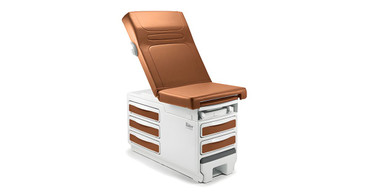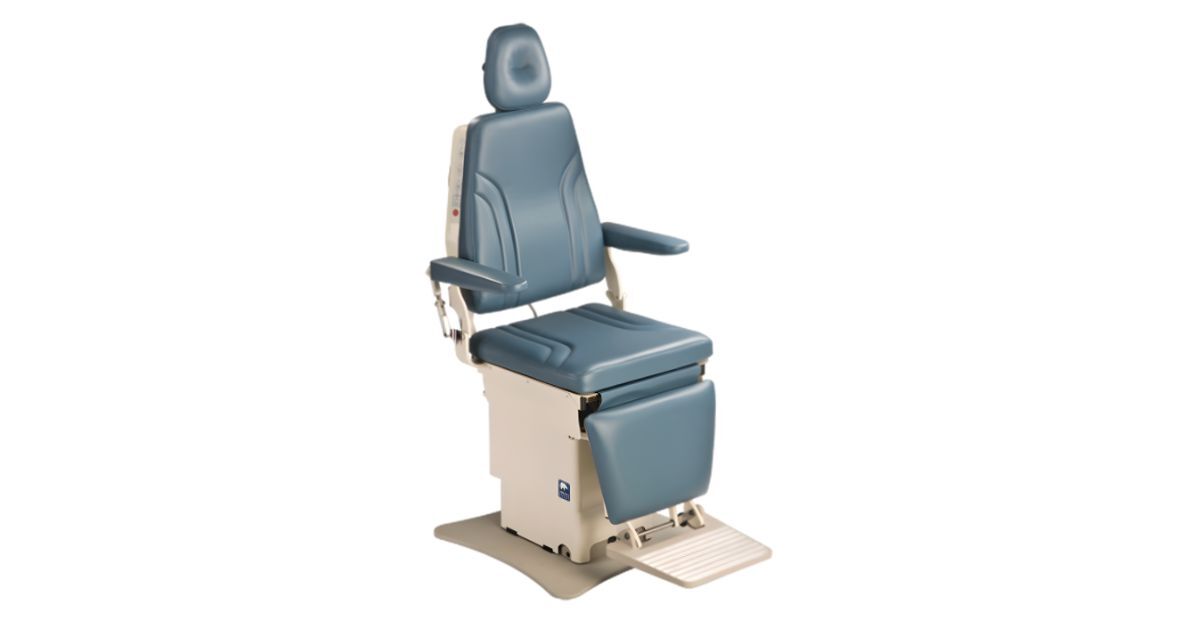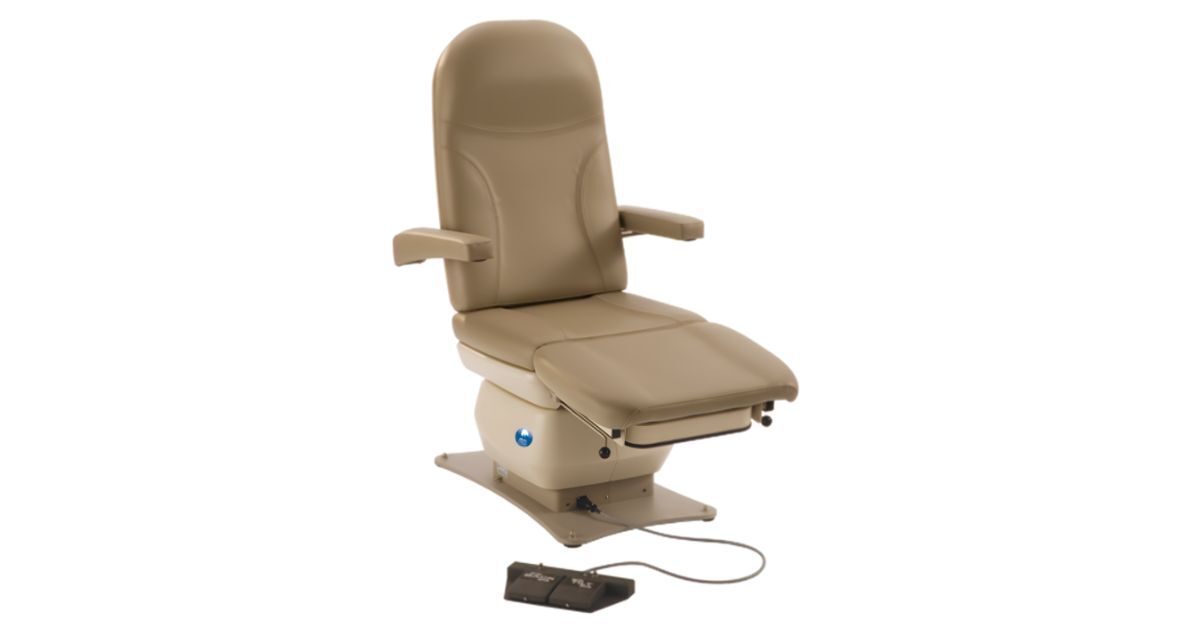
10 Tips for Sanitizing Refurbished Medical Furniture
Posted by Cevi Med on 19th Aug 2025
Refurbished medical furniture offers a cost-effective way to maintain high-quality patient care while managing budgets. These pieces provide cost savings without compromising on functionality or safety standards.
However, sanitizing refurbished medical furniture requires specialized knowledge and techniques. Medical furniture must meet stringent hygiene standards to prevent healthcare-associated infections and protect patient safety. These 10 tips for sanitizing refurbished medical furniture will help you establish effective cleaning procedures that protect patients and staff.
Understanding Refurbished Medical Furniture
Before diving into sanitization techniques, it’s important to understand what you’re working with. Refurbished medical furniture encompasses a wide range of equipment that has been restored to like-new condition through professional reconditioning.
Common Types of Refurbished Medical Furniture
Medical facilities typically refurbish several categories of furniture and equipment. These pieces contain complex mechanisms and upholstery that demand unique sanitization approaches.
- Examination tables and patient chairs see heavy daily use and require frequent replacement.
- Medical carts, storage cabinets, and mobile workstations also make up a significant portion of refurbished inventory.
- Dental chairs, surgical stools, and treatment tables require attention during the refurbishment process.
Sanitizing Refurbished Medical Furniture
Tip 1: Use EPA-Approved Disinfectants
Always select disinfectants with EPA approval for use in healthcare settings. These products have undergone rigorous testing to eliminate pathogens in medical environments, including MRSA, C. diff, and even certain viruses.
Check the EPA’s List N for products proven effective against specific pathogens. Different disinfectants have varying contact times, where the surface must remain wet with the product to sanitize it. Some require 30 seconds, while others may need up to 10 minutes of contact.
Tip 2: Follow Manufacturer’s Guidelines
Every piece of refurbished medical furniture comes with care instructions from the manufacturer. These guidelines are developed based on extensive testing and knowledge of the materials.
Pay special attention to prohibited cleaning agents. Some manufacturers warn against certain chemicals that could damage finishes, void warranties, or compromise the structural integrity of the furniture. When manufacturer guidelines aren’t available, contact the refurbishment company for recommended cleaning protocols.
Tip 3: Focus on High-Touch Areas
High-touch surfaces on furniture—armrests, headrests, control panels, handles—require extra attention during sanitization. Pathogens can survive on these surfaces for extended periods, making thorough sanitization critical for eliminating cross-contamination.
Develop a systematic approach to avoid overlooking high-touch areas. Consider creating a checklist that outlines every surface requiring attention on a piece of furniture. This approach reduces the risk of missing spots during the cleaning process.
Tip 4: Wear Protective Gear
Personal protective equipment (PPE) protects cleaning staff from chemical exposure and pathogens present on furniture. At a minimum, staff should wear nitrile gloves, which offer better chemical resistance than latex or vinyl options.
Depending on the cleaning products used, additional PPE may be necessary. Eye protection is important when using spray disinfectants, and respiratory protection may be required for certain chemical products. Always consult product safety data sheets to determine appropriate PPE requirements.

Tip 5: Ventilate the Area During Sanitization
Many medical-grade disinfectants contain volatile organic compounds that can cause respiratory irritation in poorly ventilated spaces. Open windows and doors when possible, and ensure HVAC systems are functioning properly to circulate the air.
Some facilities invest in portable air purifiers with HEPA filtration to improve air quality during intensive cleaning sessions. This is particularly important when sanitizing multiple pieces of furniture in enclosed spaces or during off-hours when building ventilation may be reduced.
Tip 6: Establish a Regular Cleaning Schedule
Consistency in sanitization prevents the buildup of pathogens and extends the life of refurbished furniture. A great tip is to develop schedules based on usage patterns. Equipment used multiple times daily requires more frequent sanitization than pieces used occasionally.
Create different cleaning protocols for daily maintenance, weekly deep cleaning, and monthly comprehensive sanitization. Daily protocols might focus on high-touch surfaces, while weekly sessions address all surfaces and moving parts. Monthly deep cleaning should include areas that are difficult to access.
Tip 7: Avoid Abrasive Cleaners
Abrasive cleaners and rough cleaning tools can damage the surfaces of refurbished medical furniture and create microscopic scratches where bacteria can get in and grow. These damaged surfaces are difficult to sanitize effectively over time.
Stick to soft microfiber cloths and non-abrasive cleaning solutions. If stubborn residue requires additional attention, allow disinfectants extra contact time rather than scrubbing aggressively. For textured surfaces, soft-bristled brushes designed for medical equipment can help without causing damage.
Tip 8: Train Staff on Sanitization Procedures
Training guarantees that all staff members understand the importance of thorough sanitization and how to execute cleaning protocols correctly. Training should cover product selection, dilution ratios, contact times, and safety procedures.
Regular refresher training helps workers maintain standards and introduces them to new products or techniques. Consider creating visual aids or reference cards that staff can consult during cleaning sessions.
Tip 9: Document Sanitization Efforts
Maintaining detailed records of sanitization activities serves multiple purposes. Documentation helps you identify patterns in equipment wear, supports compliance with health department regulations, and provides evidence of due diligence in maintaining sanitary conditions.
Records should include dates, times, products used, the staff member responsible, and issues identified during cleaning. Digital tracking systems can streamline this process and provide easy access to historical data when needed for audits or investigations.

Tip 10: Consult Cleaning Professionals
Professional cleaning services specializing in healthcare environments can complement internal cleaning efforts. These professionals stay current with evolving sanitization standards and can provide training, specialized equipment, or periodic deep-cleaning services.
Many facilities benefit from hybrid approaches where daily maintenance is handled internally, while professional services handle weekly or monthly deep sanitization. This approach ensures thorough cleaning while managing costs.
Why You Need a Reliable Supplier for Refurbished Equipment
Reputable suppliers invest in thorough refurbishment processes that address both cosmetic and functional aspects of each piece. They replace worn components, repair damaged surfaces, and ensure that furniture can withstand rigorous sanitization.
When looking for a supplier, inquire about their refurbishment process and ask for documentation of the work performed on each piece. Quality suppliers provide detailed information about replaced components, surface treatments, and recommended maintenance procedures.
Invest in Safe, Affordable Healthcare Equipment
In healthcare settings, sanitization requires dedication, knowledge, and systematic approaches. These 10 tips for sanitizing refurbished medical furniture provide a foundation for protecting patients and staff while maximizing the value of your equipment investment.
Your refurbished medical furniture must meet the highest safety standards. At Cevi Med, we make it easy to find used equipment, such as examination table upholstery, for your practice. Call today!
